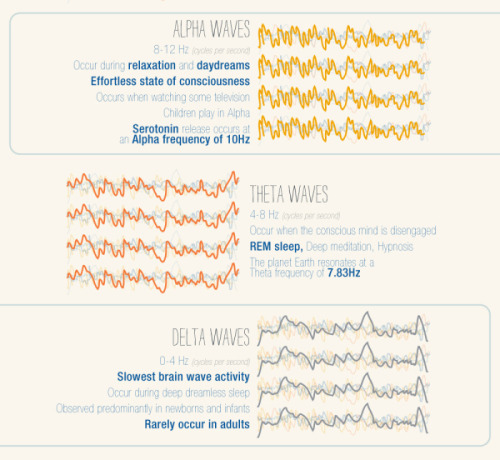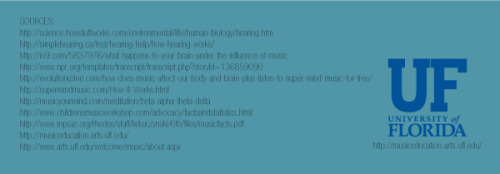An Excerpt From Time Magazines 10 Questions: Neil DeGrasse Tyson.








An excerpt from Time Magazines 10 Questions: Neil deGrasse Tyson.
(Time)
More Posts from Contradictiontonature and Others

Plantibodies and Plant-Derived Edible Vaccines
Throughout history, humans have used plants in the treatment of disease. This includes more traditional methods involving direct consumption with minimal preparation involved and the extraction of compounds for use in modern pharmaceuticals. One of the more recent methods of using plants in medicine involves the synthesis and application of plantibodies and plant produced antigens. These are recombinant antibodies and antigens respectively, which have been produced by a genetically modified plant (1, 2).
Antibodies are a diverse set of proteins which serve the purpose of aiding the body in eliminating foreign pathogens. They are secreted by effector B lymphocytes which are a type of white blood cell that circulate throughout the body. An antigen is a molecule or a component of a molecule, such as a protein or carbohydrate, which can stimulate an immune response. The human body is capable of producing around 1012 different types of antibodies, each of which can bind to a specific antigen or a small group of related motifs (3). When an antibody encounters the antigen of a foreign pathogen to which it has high affinity, it binds to it which can disable it or alert the immune system for its destruction (4).

Figure 1: Each type of antibody has the ability to bind to a specific antigen or group of antigens with high affinity.
Plants do not normally produce antibodies and thus must be genetically modified to produce plantibodies as well as foreign protein antigens. Plantibodies produced in this manner function the same way as the antibodies native to the human body (1). The main ways to do this are to stably integrate foreign DNA into a host cell and place it into a plant embryo resulting in a permanent change of the nuclear genome, or to induce transient gene expression of the specified protein (5). In both cases, the genetic material introduced to the plant codes for the protein of choice. Several of the methods used to induce permanent transgene expression include agrobacterium-mediated transformation, particle bombardment using a gene gun, or the transformation of organelles such as chloroplasts. Transient transgene expression can be done using plant viruses as viral vectors or agroinfiltration (2). Once the genetic material has been inserted, the specified protein is produced via the plant endomembrane and secretory systems, after which it can be recovered through purification of the plant tissue to be used for injection (1). The production of these proteins can also be directed to specific organs of the plant such as the seeds using targeting signals (2). Stable integration techniques are generally used for more large scale production and when the gene in question has a high level of expression, while transient techniques are used to produce a greater yield in the short term (5).

Figure 2: A gene gun being used to introduce genetic material into the leaves of a plant.
Now how can plantibodies and plant produced antigens help us as humans? The primary purpose of producing plantibodies is for the treatment of disease via immunotherapy. Immunotherapy is a method of treatment in which one’s immune response to a particular disease is enhanced. Specific plantibodies can be produced in order to target a particular disease and then be applied to patients via injection as a means of treatment (6). Doing so provides a boost to the number of antibodies against the targeted disease in the patient’s body which helps to enhance their immune system response against it. An example of this is CaroRx, the first clinically tested plantibody which has the ability to bind to Streptococcus mutans. CaroRx has been shown to be effective in the treatment of tooth decay caused by this species of bacteria (1). More recently, a plantibody known as ZMapp has shown potential in the treatment of Ebola. A study by Qiu et al showed that when administered up to 5 days after the onset of the disease, 100% of rhesus macaques that were administered the drug were shown to have recovered from its effects while all of the control group animals perished as a result of the disease (7). In addition, it has been experimentally administered to some humans who later recovered from the disease, although its role in their recovery was not fully ascertained (8).
Plant produced antigens on the other hand can be used to produce oral vaccines (9). Vaccines are typically biological mixtures containing a weakened pathogen and its antigens. Injection of this results in priming of the body’s adaptive immune system against the particular pathogen so that it can more easily recognize and respond to the threat in the future (4). By producing the antigens of targeted pathogens in plants through transgenic expression, edible vaccines can be created if the plant used is safe to eat. Tobacco, potato, and tomato plants have typically been used in past attempts to create them, showing success in both animal studies and a number of human trials. The advantages of using an oral vaccine include ease of administration and lower costs since specialised personel are not required for administration (9). In addition, oral vaccines are more effective in providing immunity against pathogens at mucosal surfaces as they can be directly applied to the gastrointestinal tract (1). The primary issue with the usage of oral vaccines is that protein antigens must avoid degradation in the stomach and intestines before they can reach the targeted sites in the body. Several solutions to this dilemma include using other biological structures such as liposomes and proteasomes as a means of delivery. This helps to prevent the proteins from being degraded by digestive enzymes and the acidic environment of the stomach before they can reach their destination (1, 9).

Figure 3: An overview of one method of producing an edible vaccine using a potato plant. A gene coding for the protein of a human pathogen is used in agrobacterium-mediated transformation to produce a transgenic potato plant. The potatoes from this plant can then serve as an edible vaccine against pathogen from which the protein originated.
There are a number of advantages to using these plant based pharmaceuticals. First of all, they can be produced on a large scale at a relatively low cost through agriculture and are convenient for long-term storage due to the resiliency and size of plant seeds (5). There is also a low risk of contamination by mammalian viruses, blood borne pathogens, and oncogenes which can remove the need for expensive removal steps (1). In addition, purification steps can be skipped if the plants used are edible and ethical problems that come with animal production can be avoided (5). The disadvantages include the potential for allergic reactions to plant antigens and contamination by pesticides and herbicides. There is also the possibility of outcrossing of transgenic pollen to weeds or related crops which would lead to non-target crops also expressing the pharmaceutical.This could lead to public concern along with the potential that other species which ingest these plants may be negatively affected (9). While plantibodies and plant produced antigens have not yet been extensively tested in clinical trials, going forward they represent a new treatment option with great promise.
References
1. Jain P, Pandey P, Jain D, Dwivedi P. Plantibody: An overview. Asian journal of Pharmacy and Life Science. 2011 Jan;1(1):87-94.
2. Stoger E, Sack M, Fischer R, Christou P. Plantibodies: applications, advantages and bottlenecks. Current Opinion in Biotechnology. 2002 Apr 1;13(2):161-166.
3. Alberts B, Johnson A, Lewis J, Raff M, Roberts K, Walter P. Molecular Biology of the Cell. 4th Edition. New York: Garland Science; 2002.
4. Parham P. The immune system. 4th Edition. New York: Garland Science; 2014.
5. Ferrante E, Simpson D. A review of the progression of transgenic plants used to produce plantibodies for human usage. J. Young Invest. 2001;4:1-0.
6. Smith MD. Antibody production in plants. Biotechnology advances. 1996 Dec 31;14(3):267-81.
7. Qiu X, Wong G, Audet J, Bello A, Fernando L, Alimonti JB, Fausther-Bovendo H, Wei H, Aviles J, Hiatt E, Johnson A. Reversion of advanced Ebola virus disease in nonhuman primates with ZMapp. Nature. 2014 Aug 29.
8. Sneed A. Know the Jargon. Scientific american. 2014 Dec 1;311(6):24-24.
9. Daniell H, Streatfield SJ, Wycoff K. Medical molecular farming: production of antibodies, biopharmaceuticals and edible vaccines in plants. Trends in plant science. 2001 May 1;6(5):219-26.

Rosalind Franklin was born #OTD in 1920. Her work was instrumental in the discovery of the structure of DNA: http://wp.me/s4aPLT-franklin
Checking Cancer At Its Origin..
In a first, the lab led by Leonard Zon at Boston Children’s Hospital has visualised the emergence of the primary melanoma cell in transgenic zebrafish that harbour the human oncogenic BRAFV600E mutation in melanocytes. This cancerous state is characterised in maturing fish by the formation of neural crest progenitors [NCPs], which are the predecessors of melanocytes and are only seen in the embryonic stage of healthy zebrafish.
The Zon lab placed the human mutated oncogene, BRAFV600E (a characteristic of benign human nevi/moles) under the control of a melanocyte-specific promoter and introduced it into the zebrafish. Generations of this transgenic fish were engineered such that they were also deficient in functional p53 (loss of function mutation). They used previous findings that in healthy zebrafish, a gene called crestin is expressed only in the embryonic NCPs and never throughout maturity, but is re-expressed selectively in melanomatous cells during adulthood. crestin was cloned adjacent to a reporter, enhanced green fluorescent protein [EGFP] for live imaging purposes.
The developmental phases of the fish, that were by now triple transgenic (for human BRAFV600E, p53 LOF and crestin:EGFP) were observed by live imaging; ~21 days after fertilisation, the expression of crestin:EGFP localised precisely to the (future) melanoma sites, and the very first triple-transgenic (individual) cells that went on to form larger masses of cells were also observed. To summarise, melanoma formation was observed in three stages: individual fluorescent cells, followed by these cells multiplying to form groups of <50 cells, and lastly these groups forming raised lesions. This consistently held true, with all 30 observed individual cells turning into 30 lesions. These results are illustrated in Figure 1.

Figure 1. In the top left box, a single cell is visualised as it multiplies into a group of melanoma cells (top right). The bottom images show the raised melanoma lesion as observed by the naked eye and by live imaging. The green fluorescence emitted from EGFP indicates that it is localised only to the melanoma (as is crestin expression), that is, it has not metastasised elsewhere.
These pre-cancerous cells were also shown to be self-sustaining and tumourigenic: when fish scales containing the mutant cells were transplanted to another part of the same fish (auto-transplant) or to another fish (allo-transplant) that was also exposed to radiation, the cells proliferated in the new site, as well as penetrated the hypodermis underneath (Figure 2).

Figure 2. The fluorescence indicates a single scale being auto-transplanted elsewhere on the same fish. As the days progress, the patch expands as well, and after day 33, the cells penetrate deeper into the hypodermis and thrive independently, and excising the transplanted scale proves futile.
Role of Transcription Factor sox10
sox10 is a master TF in NCP and its over-expression has been correlated with increased crestin expression, and accordingly, sox10 over expression in the transgenic melanocytes accelerated the melanoma onset. Following the logical train of thought that sox10 promotes melanoma progression, it was then targeted by CRISPR-Cas9 and inactivated in the transgenic cells. This resulted in a delayed onset of melanoma (180 days) compared to the controls (133 days). sox10 is also known to be expressed in most human melanoma cell lines. Moreover, the DNA element that acts as the binding site for Sox10 is also found in a hyper-acetylated [H3K27Ac], super-enhancer state. This is an epigenetic alteration and may prove a useful target in therapy (ex. HAT inhibitors).
Summary
The key finding clears up a hitherto ambiguous association between a reversion to stem/progenitor cell-like status and cancer: it indicates that the apparent devolution of a specialised cell to a primitive cellular state is not a consequence of cancer progression, but that it is an hallmark of pre-cancerous cells that may contribute to tumour progression. The rarity of melanoma formation among the mutant cells also suggests that the double mutant [BRAFV600E; p53 LOF] is not the only factor to influence the onset. Experimentally, crestin expression was a definitive prelude to formation of nevi which transformed into full-fledged raised melanomas in that spot.
This discovery has two chronological applications: first, of the many susceptible melanocytes harbouring the mutated oncogene, we can find out which are most likely to enter the melanoma state. Peaks in the expression profile of sox2, or a couple other TFs, dlx2 and tfap2, can prove to be a telltale pre-melanoma signature and thus be used in diagnosis. Secondly, by doing so, these can be better targeted early on before they’ve disseminated and become virtually untreatable.
Kaufman CK, Mosimann C, Fan ZP, Yang S, Thomas AJ, Ablain J, et al. A zebrafish melanoma model reveals emergence of neural crest identity during melanoma initiation. Science. 2016;351[6272]:aad2197–aad2197.

Astronomers Discover an Entirely New Kind of Galaxy
Astronomers at the University of Minnesota Duluth and the North Carolina Museum of Natural Sciences have identified a new class of ring galaxy. Named PGC 1000714, it features an elliptical core with not one, but two outer rings. It’s the only known galaxy of its kind in the known universe.





The Blue Lava of Kawah Ijen Volcano. The ‘blue lavas’ are a rare phenomenon, only visible on the Kawah Ijen Volcano, in Indonesia. It may look like the volcano is spewing blue lava, but in fact, the shocking blue fire occurs when the volcanic sulphuric gases combust. Emerging from cracks in the volcano’s side, these gases ignite when coming into contact with air. It’s not actual blue lava, but blue flames. (video)

As the element that makes up 75 percent of all the mass in the Universe, and more than 90 percent of all the atoms, we’re all pretty well acquainted with hydrogen.
But the simplest and most abundant element in the Universe still has some tricks up its sleeve, because physicists have just created a never-before-seen form of hydrogen - negatively charged hydrogen clusters.
To understand what negatively charged hydrogen clusters are, you first have to wrap your head around their far more common counterparts - positively charged hydrogen clusters.
Positively charged hydrogen clusters are pretty much exactly what they sound like - positively charged clusters of a few or many hydrogen molecules.
Known simply as hydrogen ion clusters, they form at very low temperatures, and can contain as many as 100 individual atoms.
Physicists confirmed the existence of hydrogen ion clusters some 40 years ago, and while a negative counterpart to these clusters boasting large numbers of atoms were theorised, no one could figure out how to create one.
But that didn’t stop a team of physicists led by Michael Renzler from the University of Innsbruck in Austria from giving it a shot.
Continue Reading.

Quote by #rosalindfranklin How do you make science a part of your life? What are you doing to fight for scientific literacy? More quotes and questions in my #ilovescience journal. #womeninscience #scientificliteracy

Happy Valentine’s Day! Hope everybody gets their share of dopamine and oxytocin today. #lovefeelings #scientificliteracy #braininlove #brainfeels

Antibiotic resistance has been called one of the biggest public health threats of our time. There is a pressing need for new and novel antibiotics to combat the rise in antibiotic-resistant bacteria worldwide.
Researchers from Florida International University’s Herbert Wertheim College of Medicine are part of an international team that has discovered a new broad-spectrum antibiotic that contains arsenic. The study, published in Nature’s Communication Biology, is a collaboration between Barry P. Rosen, Masafumi Yoshinaga, Venkadesh Sarkarai Nadar and others from the Department of Cellular Biology and Pharmacology, and Satoru Ishikawa and Masato Kuramata from the Institute for Agro-Environmental Sciences, NARO in Japan.
“The antibiotic, arsinothricin or AST, is a natural product made by soil bacteria and is effective against many types of bacteria, which is what broad-spectrum means,” said Rosen, co-senior author of the study published in the Nature journal, Communications Biology. “Arsinothricin is the first and only known natural arsenic-containing antibiotic, and we have great hopes for it.”
Although it contains arsenic, researchers say they tested AST toxicity on human blood cells and reported that “it doesn’t kill human cells in tissue culture.”
Continue Reading.
-
 ram-ma-lamb-ma liked this · 1 year ago
ram-ma-lamb-ma liked this · 1 year ago -
 squeackygee liked this · 3 years ago
squeackygee liked this · 3 years ago -
 petitemarianna liked this · 3 years ago
petitemarianna liked this · 3 years ago -
 feelinglibidinous liked this · 4 years ago
feelinglibidinous liked this · 4 years ago -
 soweirdsonormal reblogged this · 6 years ago
soweirdsonormal reblogged this · 6 years ago -
 soweirdsonormal liked this · 6 years ago
soweirdsonormal liked this · 6 years ago -
 fikmik0 liked this · 6 years ago
fikmik0 liked this · 6 years ago -
 ellejayyyybee-blog reblogged this · 6 years ago
ellejayyyybee-blog reblogged this · 6 years ago -
 kaseyannehenderson reblogged this · 6 years ago
kaseyannehenderson reblogged this · 6 years ago -
 kaseyannehenderson liked this · 6 years ago
kaseyannehenderson liked this · 6 years ago -
 mocha-iced-latte liked this · 6 years ago
mocha-iced-latte liked this · 6 years ago -
 averagepeachofshit liked this · 6 years ago
averagepeachofshit liked this · 6 years ago -
 savetheearthbros reblogged this · 6 years ago
savetheearthbros reblogged this · 6 years ago -
 supreeto0o liked this · 6 years ago
supreeto0o liked this · 6 years ago -
 itsninoouu liked this · 6 years ago
itsninoouu liked this · 6 years ago -
 cest-la-vie-ma-copine reblogged this · 6 years ago
cest-la-vie-ma-copine reblogged this · 6 years ago -
 madness-just-takes-a-push liked this · 6 years ago
madness-just-takes-a-push liked this · 6 years ago -
 one-open-diary reblogged this · 6 years ago
one-open-diary reblogged this · 6 years ago -
 jetfuelcanmeltsteel liked this · 6 years ago
jetfuelcanmeltsteel liked this · 6 years ago -
 myboydidnothingwrong liked this · 6 years ago
myboydidnothingwrong liked this · 6 years ago -
 simpleparadoxicalmesss-blog liked this · 6 years ago
simpleparadoxicalmesss-blog liked this · 6 years ago -
 justanoldfashiontumblog liked this · 6 years ago
justanoldfashiontumblog liked this · 6 years ago -
 signorafreya reblogged this · 6 years ago
signorafreya reblogged this · 6 years ago -
 tsujifreya liked this · 6 years ago
tsujifreya liked this · 6 years ago -
 jenna4fun24 liked this · 6 years ago
jenna4fun24 liked this · 6 years ago -
 o-k-a-ys-stuff liked this · 6 years ago
o-k-a-ys-stuff liked this · 6 years ago -
 tentac1es liked this · 6 years ago
tentac1es liked this · 6 years ago -
 cherries-in-the-spring-111 liked this · 6 years ago
cherries-in-the-spring-111 liked this · 6 years ago
A pharmacist and a little science sideblog. "Knowledge belongs to humanity, and is the torch which illuminates the world." - Louis Pasteur
215 posts









